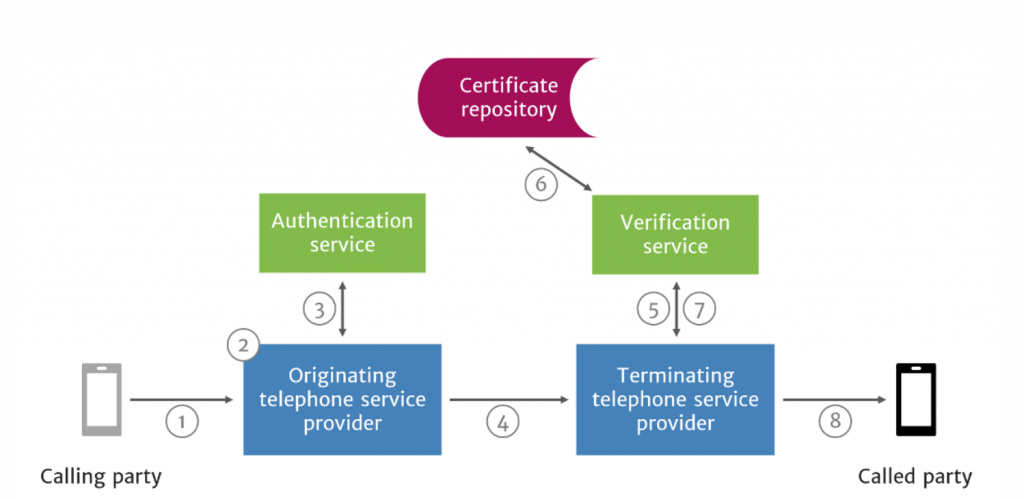
How STIR/SHAKEN works in a network.
Phone Services Begin to Provide AI that Reduces Robocalls
There are two things that people say you can count on in this life: Death and Taxes. In the age of smartphones, perhaps robocalls should be included on that list. We all get them. And we all have tried to find the latest craze that is being used to block such calls. Even the U.S. government has passed laws regarding robocalls, but with little success.
Rahul Rao has a piece in spectrum.ieee.org this week that says phone providers will now be required to help block some of these robocall annoyers. Last year, the U.S. government got serious about snuffing out robocalls. Effective 30 June 2021, the FCC mandated that phone providers verify all callers’ IDs with a cryptography-based protocol called STIR/SHAKEN.
If you have not heard of this STIR/SHAKEN process, here is how it works.
STIR/SHAKEN uses digital certificates, based on common public-key cryptography techniques, to ensure the calling number of a telephone call is secure. In simple terms, each telephone service provider obtains their digital certificate from a certificate authority that is trusted by other telephone service providers. The certificate technology enables the called party to verify that the calling number is accurate and has not been spoofed. The details of how SHAKEN uses public key infrastructure are explained in our whitepaper on Certificate Management for STIR/SHAKEN.
Brasil Is Buried in Robocalls
As bad as the number of robocalls in the U.S. is, some studies say Brasil is the country getting battered with these calls. There, the average Truecaller user in 2021 received 33 spam calls per month—nearly double distantly second-placed Peru’s rate. (For Brazilians, that’s still a drastic decline from a few years ago.)
Another app, YouMail, has been tracking U.S. robocalls since 2015. Its index shows the country’s robocall count steadily rising through much of the late 2010s, before plunging by nearly half in early 2020—likely thanks to COVID-19. It didn’t last long. By year’s end, robocalls had already returned to 2018 levels.
“Telemarketing is cruising along, just like it’s always been cruising along,” says YouMail CEO Alex Quilici.
So there are several new ideas for controlling these calls. One machine-learning-based system was created by a group including Mustaque Ahamad, a computer scientist at Georgia Tech, and Sharbani Pandit, then a graduate student there.
Ahamad describes their system as a virtual assistant that will ask the robocallers certain questions. Depending on their answers, the system will block the number or if it decides it is a legitimate call, it will pass the caller through to you.
And not all robocalls are pointless or problematic. Some may come from medical facilities, some from debt holders, and the like.
This system achieved a 97.8 percent success rate at pinpointing robocalls, and its creators hope to deploy it as an app. Another machine-learning-based system, created for Chinese mobile phones by researchers at Shanghai Jiao Tong University and the University of California, Berkeley, achieved a similar 90 percent success rate.
Similarly, U.S. law favors quiet phones. “The Telephone Consumer Protection Act requires, with some limited exceptions, that robocalls be made to a consumer only with the consumer’s prior consent,” says Slover.
There is a lot of information in Rao’s article that will help you decide what might be the best AI-based system for you to employ against the constant interruptions of robocalls.
read more at spectrum.ieee.org







Leave A Comment